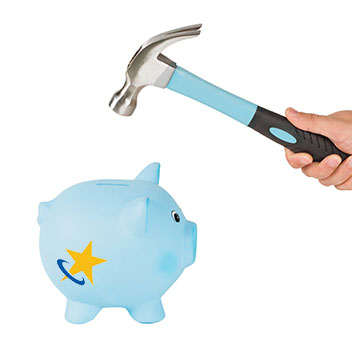Good news for student loan borrowers: Income-Based Repayment (IBR) forgiveness is back.
After months of delays, the Department of Education has restarted a plan to forgive remaining balances for long-term borrowers under income-driven repayment programs.
If you’ve been making student loan payments for years, you may finally see your balance wiped out.
Why IBR Forgiveness Is Back
Earlier this year, forgiveness programs were paused while courts reviewed parts of the SAVE Plan, one of the federal government’s newer income-driven repayment options.
Now, the Department of Education has announced that it’s moving forward with a one-time account adjustment that gives borrowers credit for past payments made under IBR, PAYE, REPAYE, or SAVE plans.
That means your older qualifying payments — even those made before consolidating— may now count toward forgiveness.
Who Qualifies for Student Loan Forgiveness
You may qualify if you:
- Have been in repayment for 20 to 25 years under any income-driven repayment plan
- Have eligible Federal Direct Loans or Federal Direct Consolidation loans held by the Department of Education
- Have been consistently making payments that may now count toward Income Driven Repayment Plans or similar programs
This process is automatic, meaning you don’t have to apply.
The Time to Opt Out Has Passed
Most borrowers won’t want to opt out of IBR forgiveness but there are a few exceptions.
If you’re on track for Public Service Loan Forgiveness (PSLF), which cancels remaining balances after 10 years of qualifying service, that forgiveness would typically occur well before any IBR forgiveness at the 20-25 year mark. The main reason someone might choose to opt-out of the IBR forgiveness is due to potential tax implications.
If that applies to you, unfortunately it’s too late, you’ll have needed to submit an opt-out request before the October 21, 2025 deadline to your loan servicer.
What Borrowers Should Do
Here’s a simple checklist to make sure you’re ready:
- Review your loan servicer account - Log in to StudentAid.gov or your loan servicer’s website to confirm your loans, repayment plan, and payment history are accurate. Make sure your contact information is up to date — this is how you’ll receive any forgiveness updates.
- Confirm your repayment plan - Check that you’re actually enrolled in Income-Based Repayment (IBR) and not another income-driven plan unless you’ve intentionally switched. Borrowers currently on IBR are automatically included in the forgiveness review.
- Verify your employment certification and PSLF status (if relevant) - If you’re interested in Public Service Loan Forgiveness, confirm your employer certification forms are up to date.
- Save your records - Take screenshots or download confirmation pages showing your current balance, repayment plan, and servicer messages. If there’s any issue after forgiveness is processed, these records can help resolve it quickly.
- Watch for updates- Keep checking your account for any updates or balance changes. If forgiveness is applied or delayed, your servicer will post notices there first.
What Happens After Forgiveness
If you qualify, your servicer will send a notice confirming that your student loan balance has been forgiven. No more payments will be due, and interest will stop accruing.
If you don’t yet meet the forgiveness threshold, the Department of Education will continue counting your payments toward the required 20- or 25-year mark.
The Bottom Line
This phase of student loan forgiveness resuming in October 2025 offers real relief for long-time borrowers.
You don’t need to fill out new forms, but you do need to stay alert and check your account.
If you qualify, you could be debt-free soon. If you’re unsure, reviewing your repayment plan now could save you from missing out.
Cash the Corgi’s Quick Tip
Log in to studentaid.gov/idr and use the Loan Simulator to see how close you are to forgiveness under IBR or SAVE. It only takes a few minutes — and it’s free.
Helpful Tools
- Financial Aid Gap Calculator — See how much college costs you still need to cover.
- Compare Student Loan Refinance Options — Find better rates and lower payments.
- Student Loan Forgiveness Guide — Understand IBR, SAVE, and PSLF in plain language.







